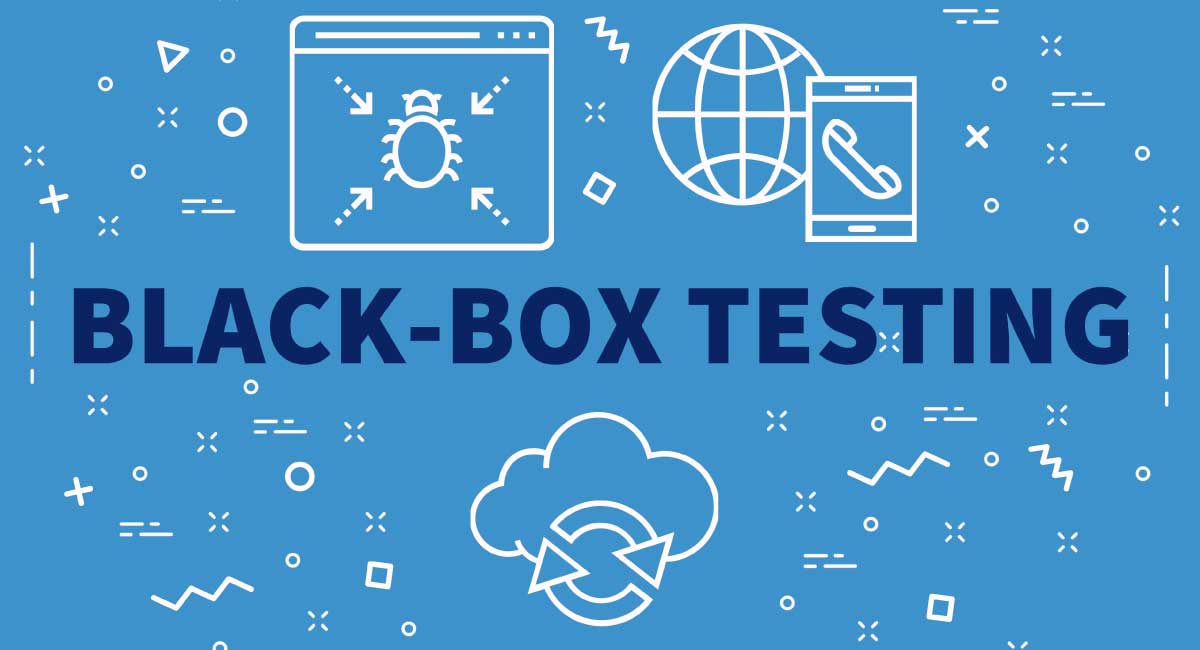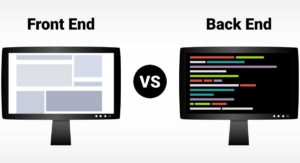In the rapidly evolving world of software development, ensuring the quality and functionality of software products is paramount. Among the various testing methodologies employed to achieve this goal, black box testing is a critical approach. This comprehensive guide delves into the intricacies of black box testing, exploring its definition, types, features, techniques, tools, pros and cons, and best practices. It also contrasts black box testing with white box testing, providing readers with a holistic understanding of its role in the broader spectrum of types of software testing — all of which you can learn through comprehensive, immersive online full stack web development training.
What is Black Box Testing?
Black box testing is a software testing method that examines an application’s functionality without peering into its internal structures or workings. This approach focuses on what the software does rather than how it does it by testing input and output flows. Testers do not need knowledge of the programming languages, internal code structure, or implementation details of the application. The main objective is to validate the software’s behavior and ensure it meets user requirements and expectations.
Also Read: A Guide to Software Engineer Interview Questions
Types Of Black Box Testing
Black box testing encompasses various types, each tailored to specific testing needs. Some of the most common types include:
- Functional Testing: Assesses the software’s functionality against specified requirements.
- Non-Functional Testing: Evaluates the software’s performance, usability, reliability, and security.
- Regression Testing: Ensures that recent code or program changes have not adversely affected existing functionalities.
- System Testing: Tests the complete and integrated software system to verify that it meets specified requirements.
Black Box Testing Features
Key features of black box testing include:
- Independence from Code: Testers do not need access to the source code.
- User-Oriented: Tests are based on user requirements and expected behavior.
- Versatile Application: Applicable across different stages of the software development lifecycle and suitable for various software types and domains.
Black Box Testing Techniques
Several techniques are employed in black box testing to cover different testing scenarios:
- Equivalence Partitioning: Divides input data into equivalent partitions that can be treated similarly for testing.
- Boundary Value Analysis: Tests the boundaries of input ranges to identify any errors that occur at the limits.
- Decision Table Testing: Uses a table representing logical conditions and corresponding actions to cover all possible combinations.
- State Transition Testing: Tests the software’s behavior as it transitions from one state to another based on input conditions or events.
Also Read: Understanding Front-end vs. Back-end Development: Career Guide 2024
How to Perform Black Box Testing
Performing black box testing involves a systematic process:
- Understand Requirements: Grasp the software’s functionality, user needs, and output requirements.
- Design Test Cases: Based on the understanding of requirements, design test cases that cover all functional scenarios.
- Execute Test Cases: Run the test cases and compare the actual outcomes against the expected results.
- Document Results: Record the outcomes of the test cases, including any discrepancies or failures.
- Report and Fix Bugs: Report any identified bugs or issues to the development team for resolution.
Black Box Testing Tools
Various tools support black box testing, facilitating the testing process and improving efficiency. Some popular tools include:
- Selenium: A powerful tool for testing web applications across different browsers and platforms.
- QTP (Quick Test Professional): Offers automated functional and regression testing for software applications.
- LoadRunner: Used to test software performance under various load conditions.
Black Box Testing Pros and Cons
Pros
- Simplifies testing by focusing on user requirements
- Does not require knowledge of programming languages or code structure
- Facilitates the involvement of non-technical stakeholders in the testing process
Cons
- Limited by the scope of specified requirements; may miss issues not covered by test scenarios
- Inefficiency in identifying specific types of issues that require in-depth knowledge of the application’s internal workings
Black Box vs. White Box Testing
While black box testing focuses on the software’s external behavior, white box testing delves into its internal structures. White box testing requires detailed programming knowledge and tests specific internal code paths, conditions, and loops. In contrast, black box testing offers a user-centric perspective, complementing white box testing in the software development and testing lifecycle.
Black Box Testing Best Practices
To maximize the effectiveness of black box testing, consider the following best practices:
- Develop comprehensive test cases that cover all functional requirements.
- Employ various black box testing techniques to ensure thorough coverage.
- Automate repetitive and regression tests to enhance efficiency.
- Foster collaboration between testers and developers to facilitate the timely resolution of identified issues.
Also Read: All About the Software Development Life Cycle
Mastering This and Other Types of Software Testing is Essential
Black box testing is an indispensable component of software testing, offering a critical evaluation of software functionality from an end-user’s perspective. By adhering to best practices and leveraging appropriate techniques and tools, organizations can ensure their software products meet the highest quality and performance standards. As software development continues to evolve, the principles and methodologies of black box testing will remain a cornerstone in the quest to deliver reliable, user-centric software solutions. To top your game as a software developer, it’s wise to consider taking an online full stack development bootcamp.
Understanding and implementing black box testing can significantly contribute to a project’s success. It allows for a clear, objective assessment of software functionality, independent of the complexity of its codebase. This testing approach facilitates the early detection of defects and inconsistencies in software behavior, thereby reducing the risk of costly post-release fixes and ensuring a smoother user experience.
Moreover, black box testing promotes a better alignment between software products and user expectations. By focusing on external functionality and user requirements, testers can identify and address gaps between what the software is supposed to do and what it does. This alignment is crucial for developing software that meets and exceeds user expectations, enhancing customer satisfaction and loyalty.
However, the effectiveness of black box testing is not solely dependent on the methodologies and techniques employed. The role of testers is pivotal. Testers with a keen understanding of user perspectives, an eye for detail, and the ability to think critically can significantly enhance testing quality. Therefore, investing in the training and development of testing teams is as important as focusing on the technical aspects of testing.
Integrating black box testing with other testing methodologies, such as white box testing and grey box testing, creates a comprehensive testing strategy covering all bases. While black box testing offers insights into the software’s functionality from an external perspective, white box testing complements it by assessing the internal mechanisms. Grey box testing bridges the gap between the two, providing a more rounded approach to software testing. Together, these methodologies ensure a thorough and effective testing process that adapts to modern software development’s complexities and demands.
In conclusion, black box testing is vital to the software development lifecycle. Its focus on software functionality and adherence to user requirements makes it indispensable for delivering high-quality software. By understanding the nuances of black box testing, employing the proper techniques and tools, and following best practices, organizations can enhance their testing processes, improve software quality, and ultimately achieve better project outcomes. As technology continues to advance, the principles of black box testing will undoubtedly evolve, but its importance in the realm of software testing will remain unwavering.
You might also like to read:
What Do Coders Do and What Kind of Coder Salary Can You Expect?
React Developer Tools: A Comprehensive List
What Does a Coder Do? A Beginner’s Guide






